Everything, everything, I mean, EVERYTHING we use and have comes from the earth. That’s the clothes we wear, the homes we live in, the food we eat, the vehicles we use, the phones we talk on, etc., etc., etc. Did you ever think about how glass is made? What about the soda can you might drink out of? Where does that come from? And that little plastic tab that comes on your bread so it can stay fresh? It’s crazy to think all of that came from the earth. At Sustainable Schools we often focus on how to reduce waste by recycling or reusing but the first “R” of Reduce, Reuse and Recycle (we like to say there are many more Rs) is first for a reason.
When we know the work and materials that go into making a product, the idea of using something only once doesn’t seem to make sense – and therefore reducing our consumption of that product helps to save our natural resources! In this series, we will explore how things are made from our natural resources and how its production affects our environment. We will explore how materials like paper, aluminum, glass and plastic are made and why it’s important to reuse and recycle them.
In this segment of Cradle to Grave, we will explore glass. What are the steps that go into making this product that is usually just a container for the item inside? We often throw containers away, but in Whatcom County we are lucky enough to be able to recycle this valuable resource. And by recycling it, we will be able to save so much more than just glass!
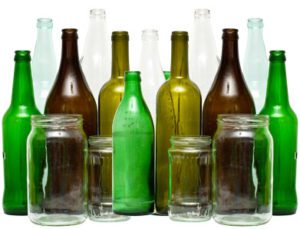
So, how is glass made?
Learn about the process of how glass is made by navigating your way through the slides below and watching the video clips attached to the slides.
![]()
When watching the video clips, think about the other natural resources that go into the process, and count the number of times you see this image of a fuel tank on the slides!
How many fuel icons did you see? I counted 13! That is a lot of fuel!
Why is there an issue with using all that fuel and the other natural resources? Read on to learn why.
What are the Environmental Impacts?
The Extraction Process
To extract rock and mineral from the Earth, roads must be built to move heavy machinery to where the raw material is. This alone can upset nature in its natural state. But each part of the extraction process has additional environmental impacts.
- Silica. Extracting Silica, requires open-pit mining which is when a hole is blasted into the ground. This can cause erosion, formation of sinkholes, biodiversity loss, and contamination of groundwater from the chemicals involved.
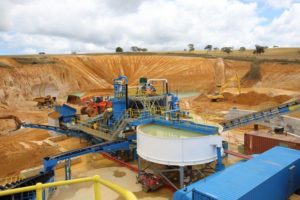
- Limestone. Extracting limestone could impact the habitats of the animals that live in limestone caves, and could reduce biodiversity as well.
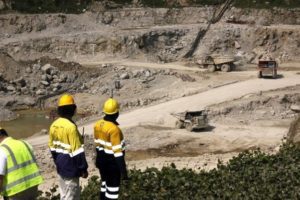
- Soda Ash. The soda ash has to go through its own refining process where lots of machines are used that require the use of fuel to create heat, and freshwater is often required as well. And freshwater is a limited resource!
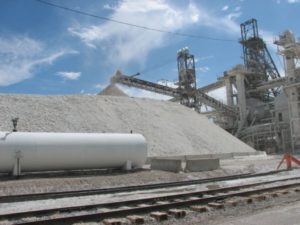
Running Machinery and Transportation
Remember all that fuel that was required in the steps from the slides above!? A lot of fuel is used in the process! That is because it requires a lot of energy to run all those machines and to heat the furnaces up to such high temperatures. These fuels are fossil fuels like gas and oil, that are non-renewable energy sources. When burning them, greenhouse gases are released into the environment, which contribute to climate change and air pollution. Learn more about non-renewable energy sources and fossil fuels.
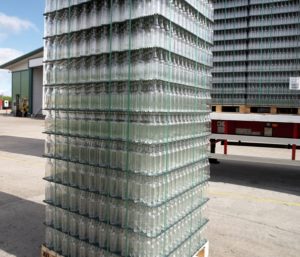
So, what can you do?
Since it takes so much energy to make glass should you just stop buying your items in glass bottles? What are your other choices? Here’s how plastic stacks up:
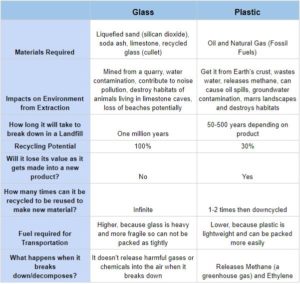
One very important thing you can do is recycle all the glass that you are not re-using. Cullet, or recycled glass, melts at a much lower temperature than it takes to heat the raw materials to make new glass. So, by recycling glass and buying recycled glass, that can save about 74% more energy! You will also save lots of natural resources like silica sand, limestone, and soda ash. Glass produced from recycled glass reduces related air pollution by 20% and related water pollution by 50%.
The glass that we recycle in Whatcom County is shipped to Seattle where they melt the glass down and make new glass bottles. Therefore, you can recycle your glass, happily knowing that it will be made into new glass in a month or two, saving lots of natural resources!
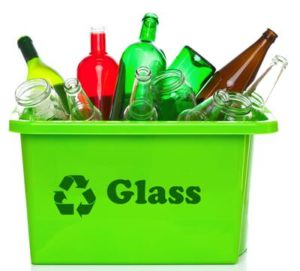
In addition, don’t throw your glass jars and bottles (unless they are broken) into the landfill. Even though it doesn’t emit chemicals or gases as it breaks down (like plastic and paper for instance), that glass jar or bottle will remain in the landfill for a million years, taking up valuable space.
Take Action
Glass jars and bottles can be reused and repurposed for many things! You can store food or drinks in jars, even buttons or money!
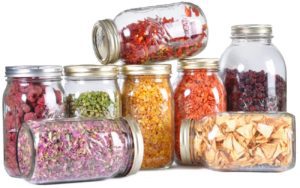
You could also up-cycle your jar by painting it or giving it a stained glass look! And when you are done using it, just wash the tissue paper off and the jar can be recycled again!
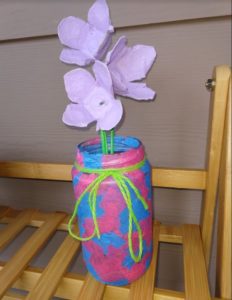
We would love to see what you do!
Please share with us how you decide to reuse your glass jars! Take a picture or video and send them to us or tag us on Instagram (@resources_protects)!
Continue learning
There are lots of topics for you to choose from. Don’t stop here; move on to discover another lesson! New lessons uploaded each week.
